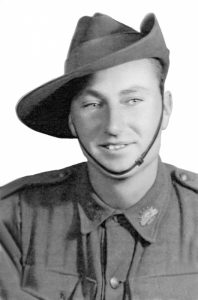TENGAH AIRFIELD 1942
History
Built in 1939, it started as a British Royal Air Force (RAF) station called RAF Tengah, and in 1971 it was handed over to the Singapore Air Defence Command, the predecessor of the Republic of Singapore Air Force (RSAF).
RAF Tengah was commissioned in 1939. Tengah airfield was the target of Carpet bombing when seventeen Japanese navy bombers conducted the First air raid on Singapore, shortly after the Battle of Malaya began. It was also the first airfield to be captured when Japanese forces invaded Singapore.
‘The Airfield was completed by 1939 as one of the bases constructed for the air defence of Singapore. Along with Seletar Airfield and Keppel Harbour, it was one of the first targets bombed by the Japanese after their landings in Malaya and Thailand in the early morning of 8 December 1941. These bombings intensified from 29 December onwards and the air cover over Singapore was inadequate to provide much protection. The airfield also lost its Station Commander, Group Captain Watts, who committed suicide near the end of January due to the stresses of the campaign.’
From the 8th December 1941 Tengah was subjected to continual air strikes by the Japanese and later in December 34 Squadron moved north to Butterworth in response to the Japanese landings in north east Malaya.
In January 1942 approx 50 crated Hawker Hurricanes arrived in Singapore a number of which were sent to Tengah. However conditions at the station were now very difficult with continual bombing and artillery fire from across the Straits of Johore. 34 Squadron was withdrawn to Palembang on the 18th January 1942 followed by 62 Squadron who were now equipped with Lockheed Hudsons leaving only Hurricanes. These were reinforced by more Hurricanes from HMS Indomitable. However these were then withdrawn to Sumatra – this was how Singapore disposed of its air power and any protection for its land army.

Tengah Airfield was the main target of the Japanese landings on north west coast of Singapore. General Tomoyuki Yamashita wanted to capture Tengah within 12 hours, but was delayed by the dogged resistance of 2/4th MGB and 22nd Brigade. The north west coast was where 2/4th’s ‘D’ Company’s four machine gun platoons had dug in. Dug in as was possible – with the swampy shorelines some pits found it necessary use sandbags for protection and hide instead.
Each Machine Gun Platoon consisted of two sections each with two Vickers machine guns giving the Battalion a total of 48 Vickers machine Guns.
This defence line to Singapore’s north west coast was firstly and most significantly undermanned. The campaign was exacerbated by inefficiencies and the poor strategies of Singapore’s higher command.
‘The invasion commenced about two hours before midnight of 8th Jan. The 2/4th machine gunners bravely fought their best however could not contain wave after wave of enemy soldiers. There were 26 deaths (most in the first two days of battle and twice as many wounded who were evacuated.
As the Japanese moved so quickly many 2/4th were caught behind their lines. Some of these succesfully escaped to Sumatra or Java. Some were captured and we know of at least 4 or 5 who tried to escape captivity only to be shot. Others captured were returned to Changi after 15th Feb such as Cpl Doug Horn who was captured at Sungei Berih.

Cpl Doug Horn WX9418 of 14 Platoon was captured in the vicinity of Sungei Berih.
On the 10th February 1942 the airfield was in Japanese hands and was operated by the Japanese Army for the rest of the war.
Please read about ‘D’ Company on north west coast.


